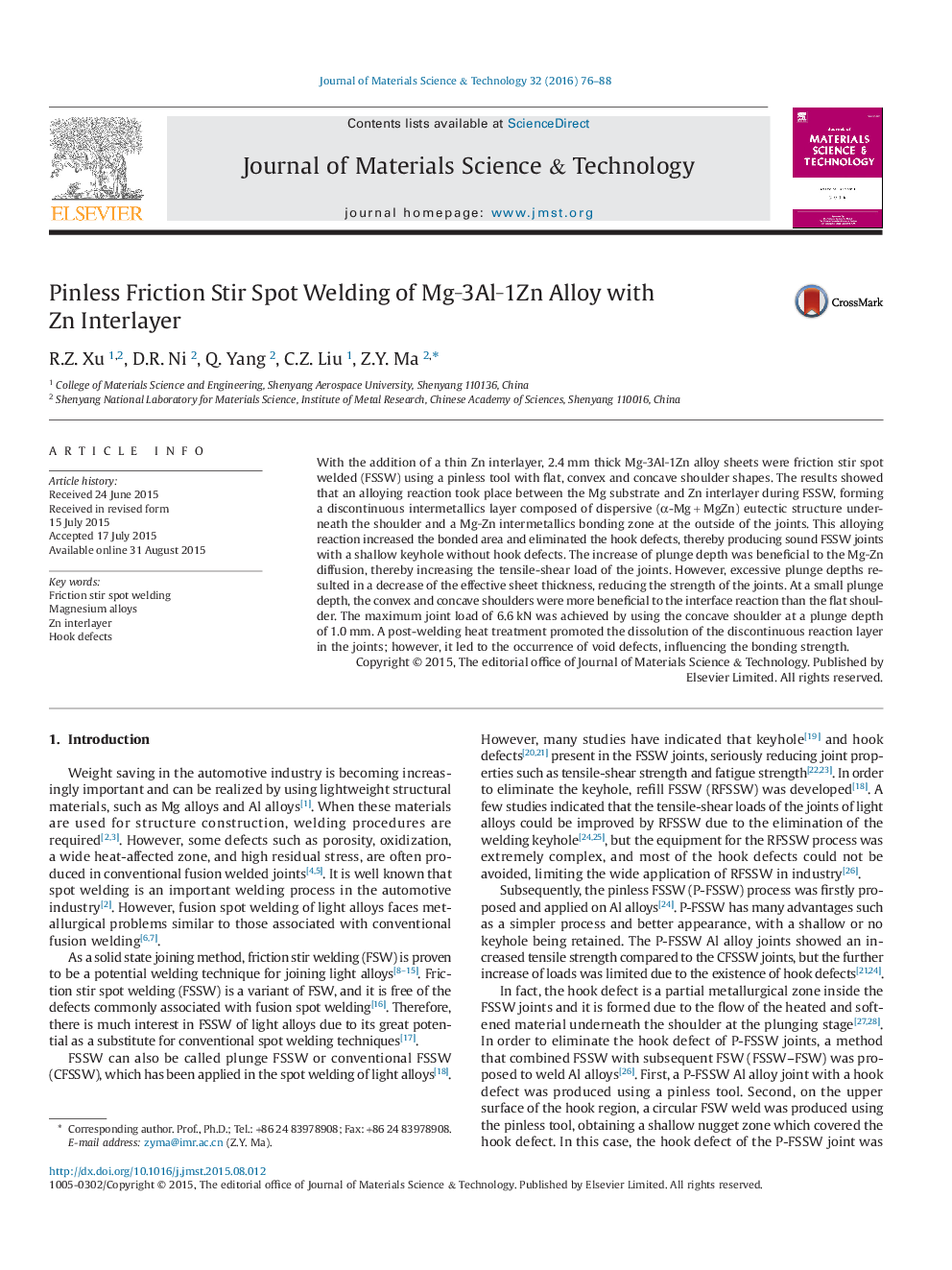| Article ID | Journal | Published Year | Pages | File Type |
|---|---|---|---|---|
| 1555962 | Journal of Materials Science & Technology | 2016 | 13 Pages |
With the addition of a thin Zn interlayer, 2.4 mm thick Mg‒3Al‒1Zn alloy sheets were friction stir spot welded (FSSW) using a pinless tool with flat, convex and concave shoulder shapes. The results showed that an alloying reaction took place between the Mg substrate and Zn interlayer during FSSW, forming a discontinuous intermetallics layer composed of dispersive (α-Mg + MgZn) eutectic structure underneath the shoulder and a Mg‒Zn intermetallics bonding zone at the outside of the joints. This alloying reaction increased the bonded area and eliminated the hook defects, thereby producing sound FSSW joints with a shallow keyhole without hook defects. The increase of plunge depth was beneficial to the Mg‒Zn diffusion, thereby increasing the tensile-shear load of the joints. However, excessive plunge depths resulted in a decrease of the effective sheet thickness, reducing the strength of the joints. At a small plunge depth, the convex and concave shoulders were more beneficial to the interface reaction than the flat shoulder. The maximum joint load of 6.6 kN was achieved by using the concave shoulder at a plunge depth of 1.0 mm. A post-welding heat treatment promoted the dissolution of the discontinuous reaction layer in the joints; however, it led to the occurrence of void defects, influencing the bonding strength.
